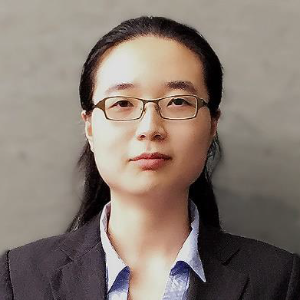Title : Human iPSC-derived microglia chimeric mouse as a translatable in vivo model
Abstract:
Microglia are resident macrophages of the brain parenchyma that is involved in many critical CNS functions, ranging from supporting neurogenesis and synapse remodeling to direct modulation of myelination and phagocytosis. Due to its reactive response to disease state and neuronal damage, microglia are critically involved in pathogenesis of neurological disorders such as Alzheimer’s disease, Parkinson’s disease, and Multiple Sclerosis. While human iPSC-derived microglia allow the study of microglia disease-associated inflammatory response to stimuli, when cultured in isolation from the brain environment, microglia undergo drastic transcriptomic changes. These changes in gene expression challenge the study of human microglia in their homeostatic state. In addition, microglia from mouse models cannot completely recapitulate human genetic variability. Here, we transplanted iPSC-derived hematopoietic progenitor cells into a neonatal mouse brain to study human microglia within an intact brain environment. An immunodeficient mouse expressing human cytokines colony-stimulating factor 1 (CSF1) serves as a surrogate host for the human iPSC-derived cells, providing a more mature and structurally developed environment for maturation of human microglia. Immunofluorescence (IF) staining showed wide and dense coverage of engrafted cells in the cortex, as well as in the hippocampus, striatum, and olfactory bulb. Engrafted human cells strongly expresses microglial marker Iba1, hP2Y12 and the myeloid transcription factor PU.1, suggesting in vivo differentiation of human HPC into microglia. Bioluminescence imaging (BLI) was also performed on mice engrafted with Td-tomato expressing cells and cell proliferation was observed over 4-month post engraftment. To isolate the human microglia population in the host mouse brain and quantitatively assess the chimerism, we developed a fluorescence-activated cell sorting (FACS) protocol based on species-specific microglia markers mCD45, hCD45, hCX3CR1 and hP2Y12. With a brief exposure to PLX 5622, a CSF1 receptor (CSF1R) inhibitor, the percentage of engrafted human microglia in 2-month-old mice reaches an equivalent level of the chimerism in 10-month-old mice without PLX treatment, demonstrating the proliferative advantage the transient CSF1R blockade provides to the transplanted human hematopoietic progenitor cells over mouse microglia. In addition, we performed a bulk RNA-sequencing experiment of the in vivo differentiated microglia along with in vitro differentiated microglia. We then found that the xenografted iPSC-derived microglia not only retain key microglia signature, but also expresses homeostatic microglial genes at a higher level than iPSC-derived microglia differentiated in vitro. Taken together, our findings suggest that this humanized microglia chimeric mouse model could serve as a powerful pre-clinical tool to investigate system level impact of risk gene mutations in human microglia, enabling disease modeling in a more translatable manner.
Audience Take Away
- The audience will learn about how a cell transplantation-based approach led to the generation of a humanized microglia chimeric mouse model which hosts human microglia in their homeostatic state and about the use of a pharmacological intervention to accelerate human cell repopulation in the mouse brain
- The audience will be inspired to think more about the advantages and limitations of different in vitro and in vivo models for their research and its translational implications
- The audience will appreciate the value this human microglia chimeric mouse model provides as a more translatable pre-clinical model to test therapeutic candidates for neurological disorders
- The audience will also learn about our approach to translate in vitro cultured-iPSC-derived cells to an in vivo context for human microglia differentiation and the opportunity iPSC-derived cells provided for convenient introduction of risk gene mutations in the mouse model




